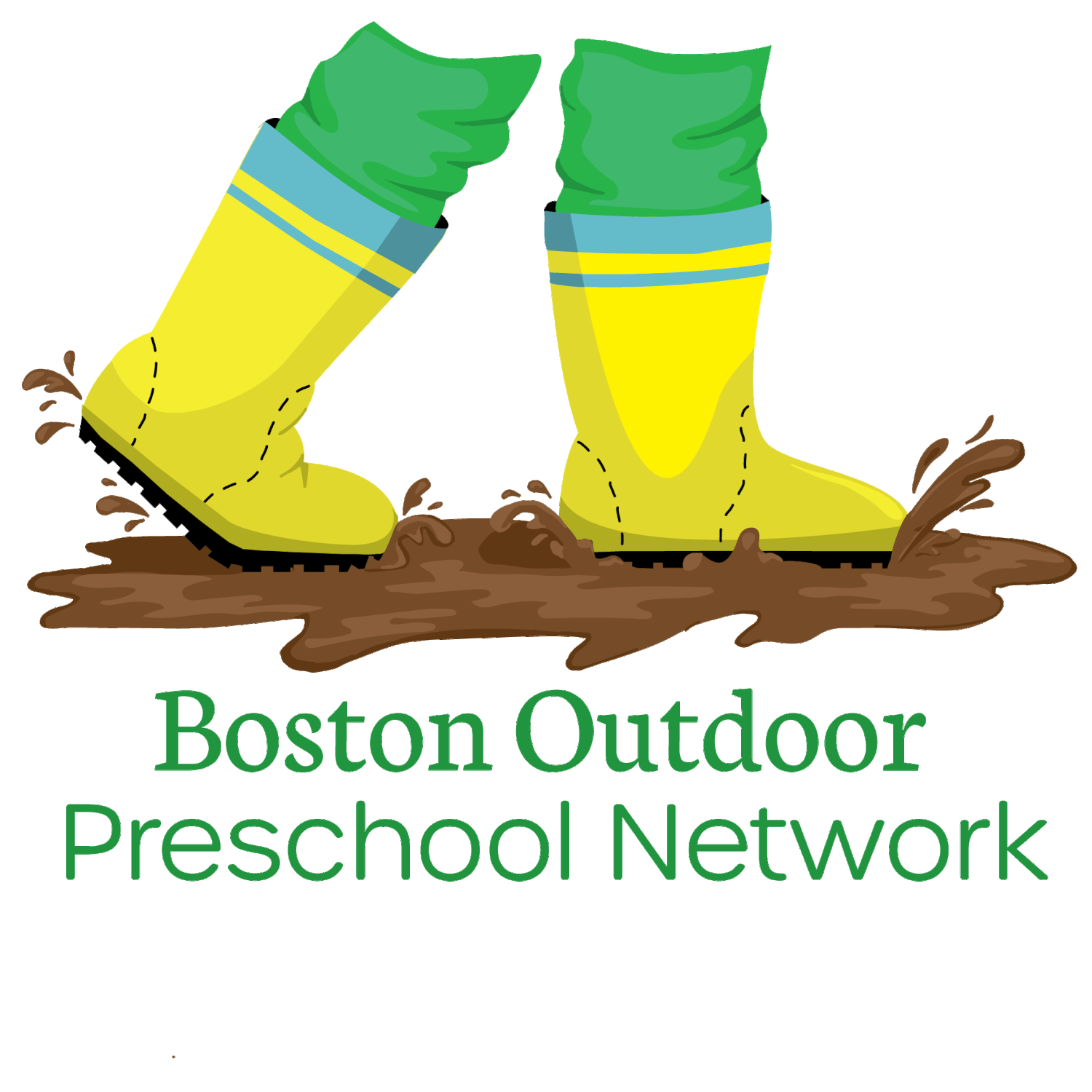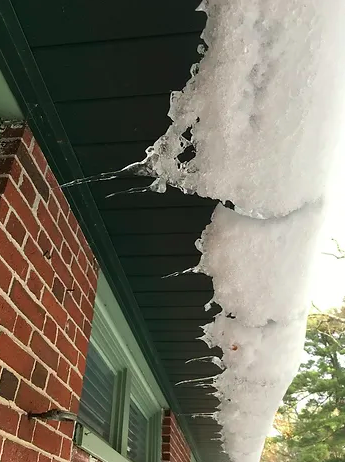Outdoor Gear for Kids: New England Winter Edition
By: Sarah Satgunam
Decision fatigue, meet outdoor school. For us grown ups who are not already semi-professional outdoorspeople, how on earth are we supposed to know how to dress our children to achieve the "Goldilocks" not too hot, not too cold effect every day? Aside from temperature, there's wind, and rain or snow, and rain-snow. And when it comes to gear, what's the difference between water resistant and waterproof, insulated or not? Wool or cotton? Does my child really need rain mittens? (Wait - what are rain mittens?!) Read on to keep your mornings from going as sideways as these icicles that formed on one of our buildings last year.
BOPN teachers have done an excellent job training veteran BOPN'ers (BOPN-ites?) in how to dress our children for the matrix that is New England weather. (I grew up here, but it doesn't matter. Outdoor school is next level.)
Despite what the calendar says, WINTER can show up for a surprise visit in autumn. Take, for example, the Halloween snowstorm in October 2020. Was I prepared? NO. Can you be if it happens again this year? YES. Here's my attempt at what I'm calling "Outdoor Gear for Kids: New England Winter Edition."
What kind of cold are we talking about in this post? Generally, a wind chill temperature below 40 degrees Fahrenheit. (Between 40 and 50 is the "Many Faces of March Pre-Spring Edition." Stay tuned. That is when rain mittens will be discussed.) Please keep in mind that the child you belong to may run hot or cold, so this temperature metric can vary a little for them. Such details are best determined through trial and error. The suggestions below are as close as you get to a baseline winter clothing uniform.
Lesson #1: "But I Thought Cotton was Good" (The Base Layer)
Perhaps much of your child's wardrobe is cotton. After all, it's frequently advertised as the best option for a child's sensitive skin. In this context, IT IS NOT your friend. Why? When cotton gets wet, it stays wet for quite some time. In winter, your child may get hot and sweaty while running around with many layers of clothing, but if they are wearing, say, a cotton shirt against their skin, or cotton leggings, those items may retain that moisture and make your child cold and uncomfortable. So - instead of cotton, opt for a wool "base layer" - a long sleeve pant and shirt set, kind of like long underwear, which dries more quickly when wet and also has the wondrous property of regulating your child's temperature even when wet.
Given this magic, do not stop there. Also opt for winter wool socks and (thin) wool mittens. We like Smartwool socks. A variety of woolen socks of various thickness are at Polarn O’Pyret - medium thick rib wool is best for deep winter. Mittens are better than gloves because they are better at retaining heat and easier for your preschooler to put on. You can layer thin wool mittens underneath insulated waterproof mittens. Kids will want to take off the bulkier outer mittens in order to eat snack or do crafts. (Yes, we still do crafts in winter if it's not too terribly cold!) The wool mittens will get wet, so to keep your child comfortable, we recommend keeping an extra pair in a waterproof bag in your child's backpack.
Wool is not inexpensive; however, it does not need to be washed as frequently (say once per week), so your child can in theory get away with owning just one quality base layer set. As a backup, you can also get a high tech polyester set. Either way, if your child is highly sensitive to sensory input, look for brand reviews that specifically talk about whether children find it itchy (or not) and consider removing any tags.
Start looking early in the season as wool base layers sell out quickly. Brand recommendations include: Ella’s Wool, REI, Smartwool, Wee Wollies, Biddle and Bop, Nui Organics, Chasing Windmill Kids, TK Clothing Victoria (grow-with-me design and multiple weights of wool).
Lesson #2: Fleece IS your Friend (The Mid Layer)
Although not a suitable base layer, as a "mid layer," fleece is a great option. Fleece pants and a fleece jacket will help your little ones stay nice and toasty on cold days. Also consider a fleece or wool neck warmer and hat.
Lesson #3: If it Doesn't Say Insulated and Waterproof, it's Probably Not (The Outer Layer)
There are many, many options when it comes to jackets, snow pants, snow suits, snow boots, and snow mittens. First and foremost, make sure you choose options that are well insulated and waterproof. How do you know if an item you're considering is insulated and waterproof? If the "item description" online or the sales tag doesn't say it, it's probably not. P.S. I live and die by Bogs (the insulated version).
An important note here on car seats. At preschool age, our children are still in car seats, and most outerwear can be somewhat to very bulky. Car seat straps should be adjusted such that they are snug against your child. In the case of an accident, the straps must be appropriately adjusted to prevent your child from sliding out of them. Bottom line, because winter jackets and snow suits often require a lot of slack in the straps, most of them are not safe for car seats. For more information on this topic, see here. Many families wait until they get to school to put on their child's top outer layer or snow suit.
(You may be asking yourself) How Do I Afford All of This?!
Wool is not cheap. Bogs are not cheap. Mind you, I purchased a lightly "pre-loved" pair on Facebook Marketplace for $20. It can be done. Post on the BOPN Facebook group. Check out discounted sites like Sierra Trading Post and Mountain Warehouse. Also, when relatives ask what your child wants for their birthday or another holiday your family celebrates, you could say "a _____ gift certificate (insert outdoor school-friendly store of choice - Reima, Polarn O' Pyret, Columbia, etc.").
Also a note when purchasing or inheriting secondhand gear - waterproofing can wear down over several washes, especially if laundering instructions are not carefully followed.
Conclusion: The Key is Layering, Layering, and more Layering
In colder weather, layers are key for keeping your child's core warm, which will keep the rest of their body warm. In sum, key winter clothing items are:
Wool base layer (long sleeve pants and shirt)
Two pairs of thin wool mittens (one as a backup in the backpack). Alternatively, you can purchase several pairs of the polyester "magic mittens," layer on two pairs for extra warmth, and again keep extras in your child's backpack in a waterproof pouch.
Wool socks specifically for winter
Wool or fleece hat that covers the ears, or a balaclava
Fleece jacket
Fleece pants
Fleece or wool neck warmer (if not using a balaclava)
Insulated and waterproof jacket and pants (or one piece, but in the case of potty trained preschoolers think about clothing that is easiest to get on and off)
Insulated and waterproof boots
Insulated and waterproof mittens
Also, on super cold days, consider hand warmers, reusable or one-time use. My child never really liked these, but other children do. You also can opt for thin wool mittens, with thin stretchy "magic" mittens over them, with insulated, waterproof mittens over them. (And get mitten insurance. Kidding.) With the proper clothing, your child can be warm and happy on even the coldest of days at outdoor preschool!
Additional Resources:
If you would like to read more on this topic, there are plenty of great resources! Check out the Layering Guide from Outdoor School Shop or this YouTube video.


